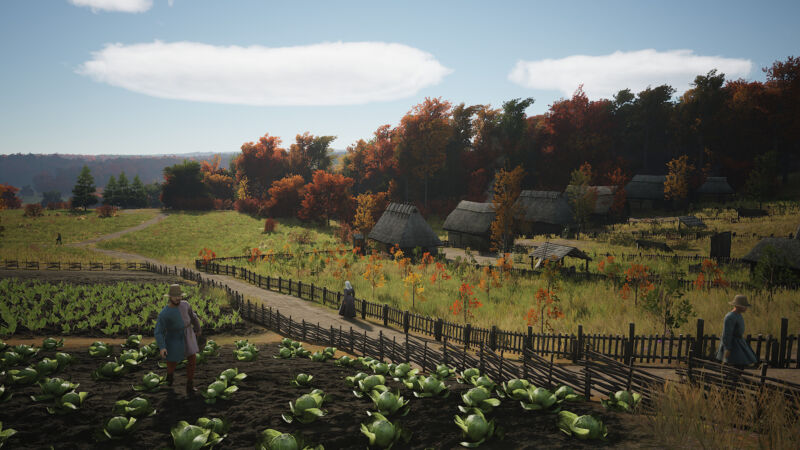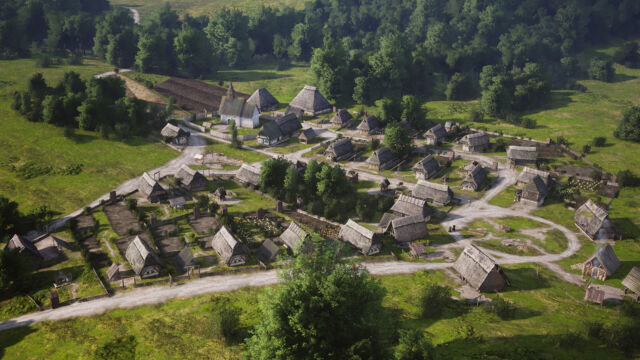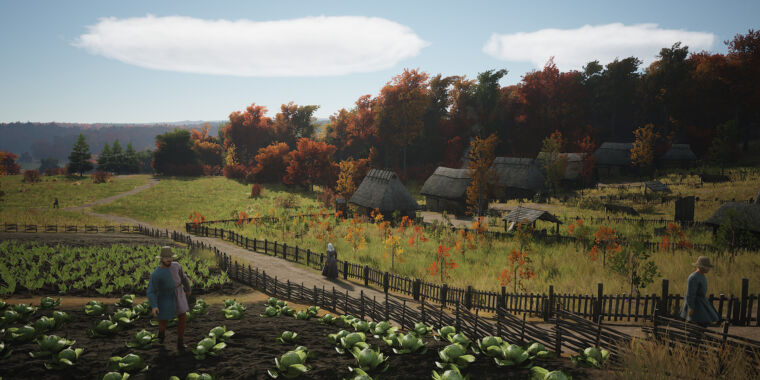Manor Lords’ medieval micromanagement means making many messes

Enlarge / This peaceful, pastoral scene actually represents a ton of hard work!
Slavic Magic
Do you ever look around at modern civilization and boggle at the sheer complexity of it all? Do you ever think about the generations of backbreaking labor needed to turn acres and acres of untamed wilderness into the layers of interconnected systems needed to provide basic necessities—much less luxuries—to both early settlers and their generations of descendants?
All that infrastructure work is much harder to take for granted after playing Manor Lords. The Early Access version of the game—which netted a million Steam sales in its first 24 hours last month—forces you to do a lot of the heavy lifting that many other city builders tend to gloss over. And while there are still a lot of Early Access rough spots, what’s already there can make you appreciate just how hard it is to build a functioning society from nothing but raw materials and hard labor.
Let go of my hand
In many other city builders, you act as something of a detached, bureaucratic god. Lay down some roads, set aside some zoning, and watch as the microscopic masses automatically fill in the details of the housing, commerce, and industry needed to create a functional society.
Not so in Manor Lords, where micromanagement is essential to survival. The five starting families in your initial settlement must be specifically guided to their tasks, spreading themselves thin between farming, resource gathering, and construction before the harsh winter sets in. There’s no easy residential zoning here—you have to lay out the four corners of every individual “burgage plot” that will be used to house a single family.

Enlarge / Getting your settlement this thriving takes a lot of learning by doing.
Slavic Magic
Assigning settlers to their necessary tasks isn’t exactly a “set it and forget it” matter, either. You have to direct your hard-working families’ efforts to where they’re most needed, as the town’s requirements change with the seasons. This is especially true throughout that all-important first harvest season, where the meager stocks of bread you start don’t go nearly as far as you might like.
And don’t expect Manor Lords to hold your hand through a first tutorial run, either. The Early Access version decidedly does not instruct you on the basics of survival, throwing your settlers into an open clearing with minimal tooltip instructions for what you need to do. That means figuring out the correct mix of agriculture, mining, and construction needed for survival can be a matter of trial and error in the early going.
Learning the hard way
My first run at building a Manor Lords settlement ended in a disaster of harvest timing. After building my first field and farmhouse, I went multiple in-game months before realizing I had to specifically tell my settlers to start planting wheat for the coming harvest. By the time I forced a meager early harvest, my citizens were already going hungry, and I started over so I didn’t have to watch them slowly starve.
I started the planting earlier in my second run, but my meager group of settlers still started going hungry in the summer, months before the wheat would be ready to harvest. This time, I forced my citizens to tough it out through the lean months, building a windmill and a communal oven to be ready to make delicious bread when the time came. But when the harvest started, those buildings steadfastly refused to start processing the wheat and baking the food my citizens desperately needed.
I had to consult the Internet to figure out that my farm workers were mysteriously not threshing the gathered wheat so it could move down the bread production line. Forcing the farmers to focus their work on the farmhouse somehow shocked them out of this reverie, but not before the hungry citizens had tanked the approval level needed to help my settlement grow.
Manor Lords’ medieval micromanagement means making many messes Read More »


